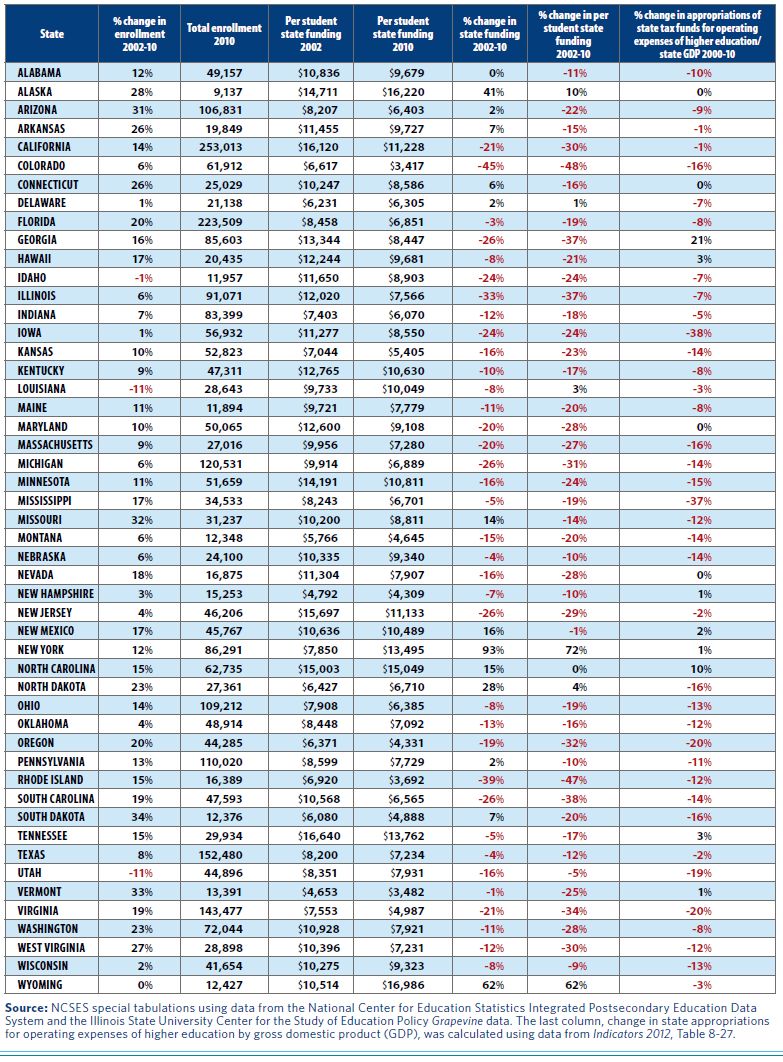|
News & Views item - October 2012 |
![]() Diminishing Funding for US Public Research Universities -- Its Australian
Relevence? (October 26, 2012)
Diminishing Funding for US Public Research Universities -- Its Australian
Relevence? (October 26, 2012)
The body overseeing the US National Science Foundation (NSF), the National Science Board (NSB) posted on September 25, 2012 its 28-page report on Diminishing Funding and Rising Expectations: Trends and Challenges for Public Research Universities.
The chairman of the NSB, Dan Arvizu, in his letter to "Dear Colleagues" writes:
"The data in Indicators [the biennial Science and Engineering
Indicators] reveal some trends that raise important policy concerns that
the Board then conveys to the President, Congress, and the public in the form of
a “companion”
policy statement to the Indicators report.
Dr Arvizu continues: "In the 2012 edition of Indicators, the Board reported a substantial decline over the last decade in per student state appropriations at the Nation’s major public research universities... The Nation’s public research universities play a vital role in preparing the next generation of innovators -- educating and training a large number of science and engineering students at the undergraduate and graduate levels while maintaining relative affordability. They perform over half of all academic research and development... In the wake of increasing enrolment and costs and declining per student state appropriations, the Board is concerned with the continued ability of these institutions to provide affordable, quality education and training..."
And in its conclusion the report pleads for an: "enduring commitment to strengthen these universities, and to maintain quality and affordability is an imperative if our Nation is to increase the number of highly-skilled U.S. S&E graduates and compete in today’s knowledge-driven global economy."
It also issues a cogent warning: "Reductions in revenue of public research universities and gaps in salary between public and private research universities have the potential to lead to an outflow of talent at public research universities and reduced research capacity. These could result in greater concentration of talent and R&D in fewer geo-graphical locations, and at fewer universities, with smaller and less diverse student bodies. This could have a substantial impact on economic and workforce development at the local, state, and national levels."
Below we reproduce several graphics and a telling table which are part of the NSB's report.
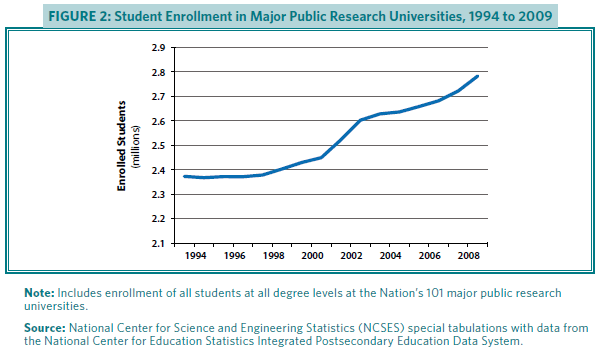
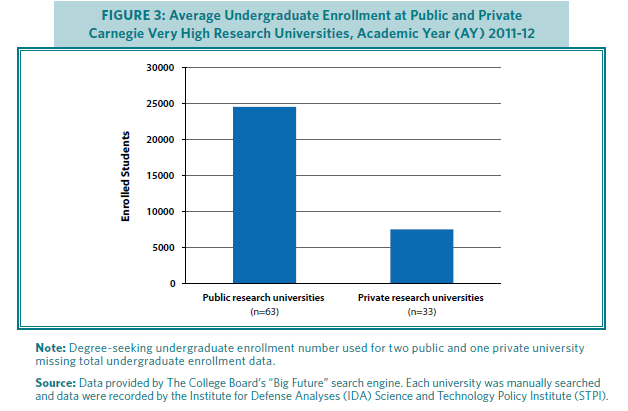
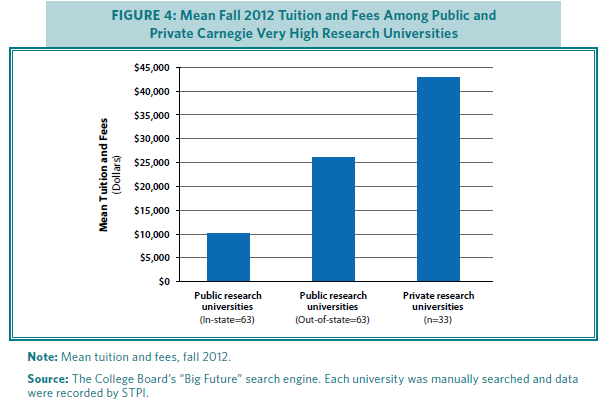
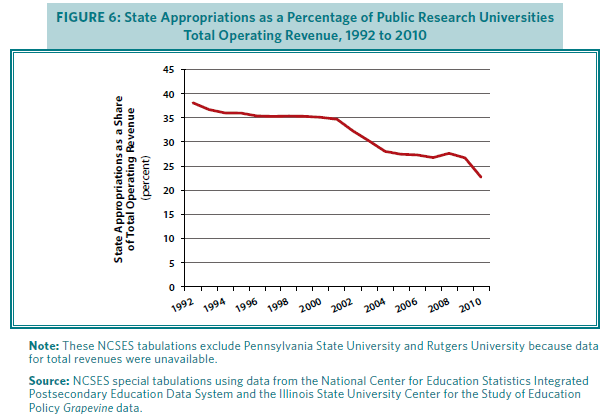
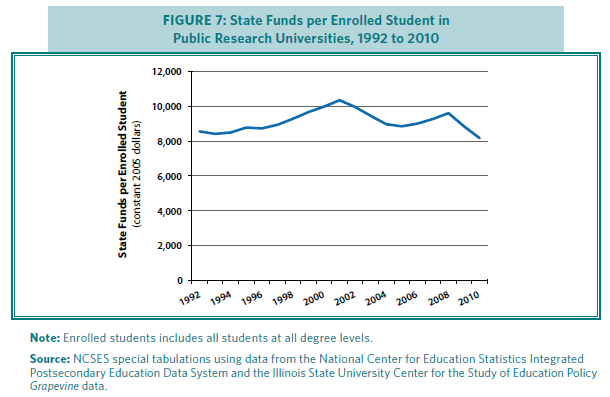
Trends in Enrolments and State Funding for the Nation’s 101 Major Public Research Universities 2002-2010
